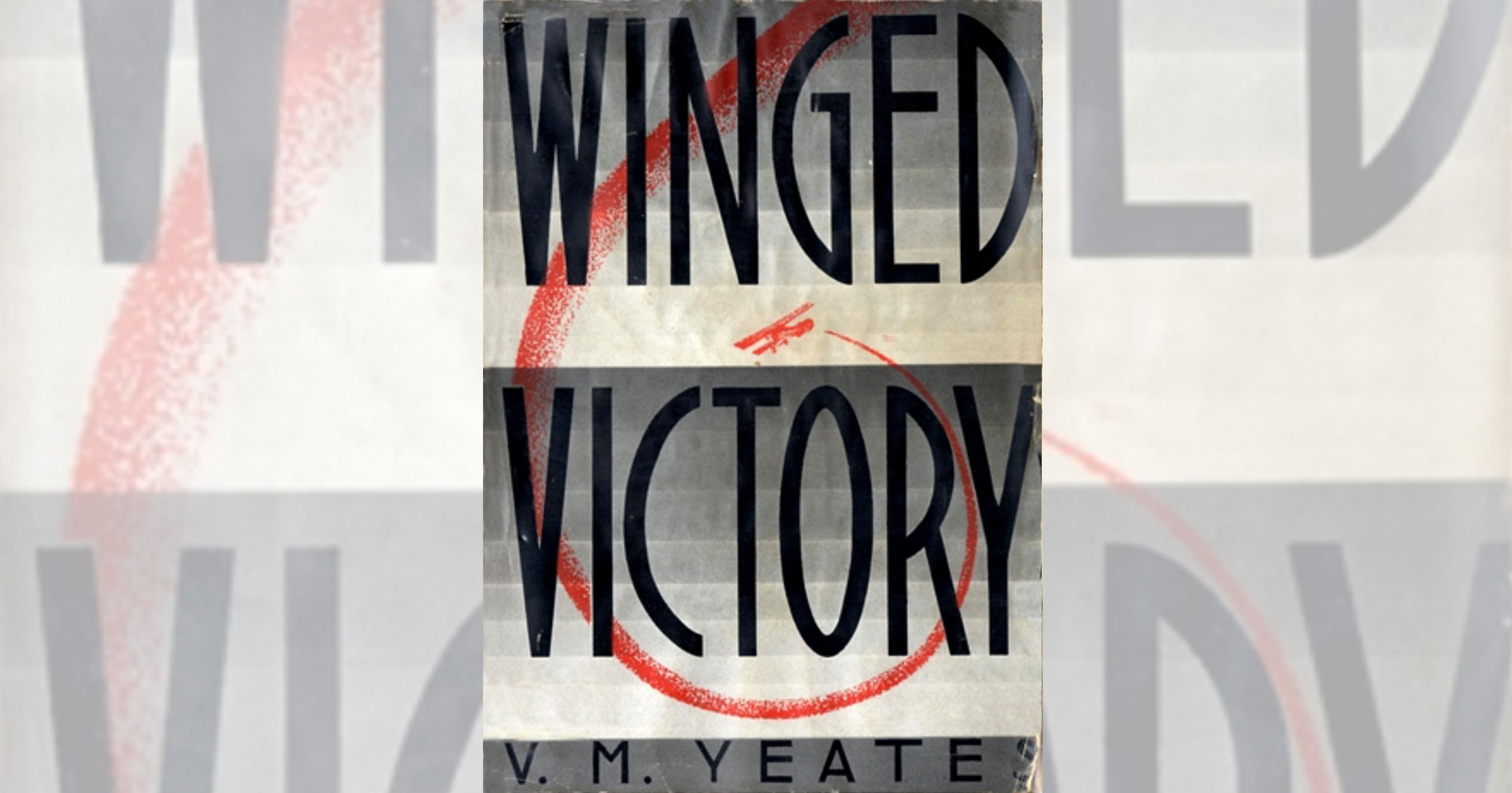Winged Victory by V.M. Yeates
This is absolutely the best novel on World War I aviation bar none, not only because it is rigorously authentic but because it is beautifully written. The irony is that the author, V.M. Yeates, a Sopwith Camel pilot for the RFC and RAF, wrote it when he was very ill and desperately in need of funds. Unfortunately, his book was ignored, and Yeates died feeling that he had failed. For some reason, his work did not catch the tide of antiwar sentiment that made Erich Maria Remarque’s All Quiet on the Western Front a bestseller. Now All Quiet is a great book that I’ve read many times, but it is not nearly as moving and well written as Winged Victory.
Tom Cundall is Yeates’ central character, an erudite chap who hates war but feels he has to do his duty, and is spurred on by his attachment to his comrades in the squadron. Cundall loves flying—he enjoys aerobatics, “strafing” the cars of Allied staff officers and drinking in the majesty of a sunset. He doesn’t really mind aerial combat, feeling that the German pilots facing him are generally unaggressive and often flying inferior aircraft. (“Both Albatros and Pfalz had a wonderful respect for Camels, and it was necessary to go about in small formations to get them to so much as fire a shot from above, let alone dog-fight.”) But because of the tremendous casualties, he detests the close air support to which the Camel squadrons were assigned. (“If only Tom could throw off the feeling of terror that gripped his vitals when he went near the gun-bristling earth: but it was as though fear had gathered there like an invisible gas, and everytime he dived into it, he was inevitably overcome.”) Indeed, the loss rate of ground attack aircraft was so great that it affected RAF thinking after World War I to the extent that neither aircraft nor tactics were created for that mission until well into World War II.
Yeates paints an almost cozy picture of life at the front with a Camel squadron. Cundall enjoys his comrades, even though he knows better than to become too attached to anyone, given that death continually stalks them all. (“Tom always found something slightly touching in the sight of Chadwick giving himself so earnestly and completely to his mandolin.”) Yeates’ experience permits him to recount the relationships of the British fliers with their American and “colonial” counterparts, and also provides insight into the routine of a combat pilot.
He’s at his best describing flying. Here’s how he depicts ascending through a lowering sky in a Camel: “The cloud was dense; he could hardly see his wingtips. Watching his altimeter, he climbed….There was vibration. He pushed the stick forward but it didn’t seem to make any difference. Then—God, what a jerk! His head banged against the centre-section of the top plane. What the hell was happening?…He was out of the clouds and the earth was all round him—spinning like hell. God, the engine was on, he was done for! He pulled back the fine adjustment and put the stick right forward against the dashboard with full left rudder. The engine stopped. He was diving vertically; no room to get out; death.” That passage will resonate with anyone who’s encountered vertigo in flight.
The combat scenes are equally authentic. (“Tom slithered about, earnestly considering his own safety. The pilot of the Albatros had to come out of his spiral at last, but not above five hundred feet. Mac was waiting for this and with superb quickness he flicked into position a dozen yards behind the Albatros’ tail and fired a burst. It dived to earth.”)
Perhaps the book’s most satisfying aspect is the characterization of Tom Cundall as Yeates himself must have been: an earnest, sensible man fearful at the thought of death, but driven to hold up his end with his comrades—a workman hero, doing his best although he knows survival is as much a matter of chance as skill. It’s too bad Yeates was denied the accolades due him; he earned them twice, once battling the Hun, and once battling the critics and the public.
Originally published in the July 2008 issue of Aviation History. To subscribe, click here.





